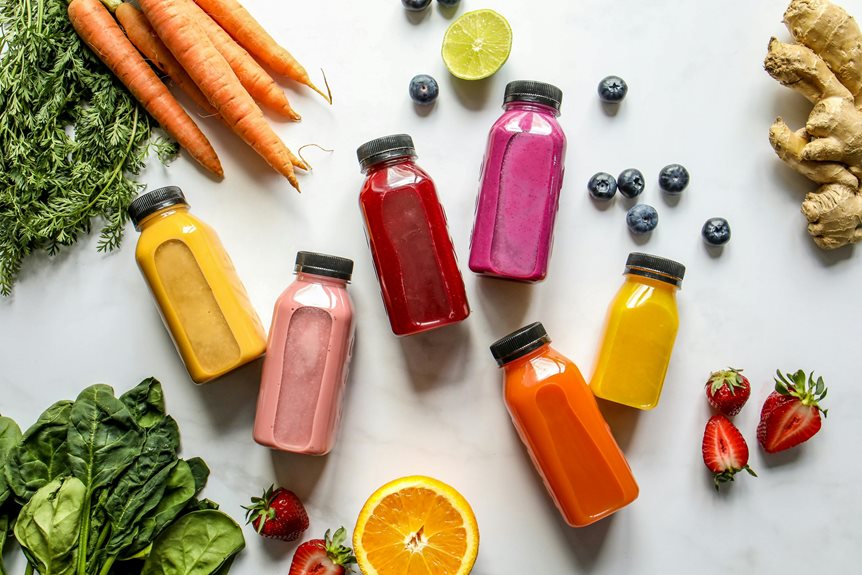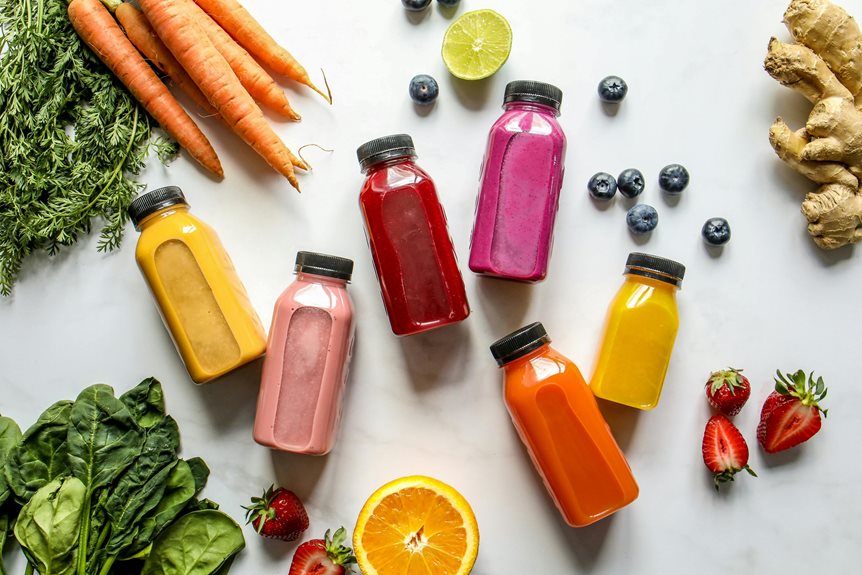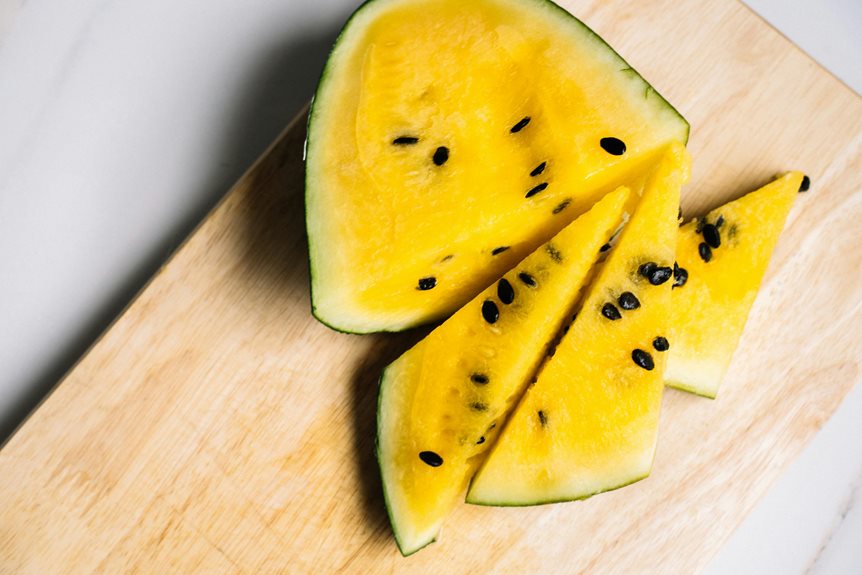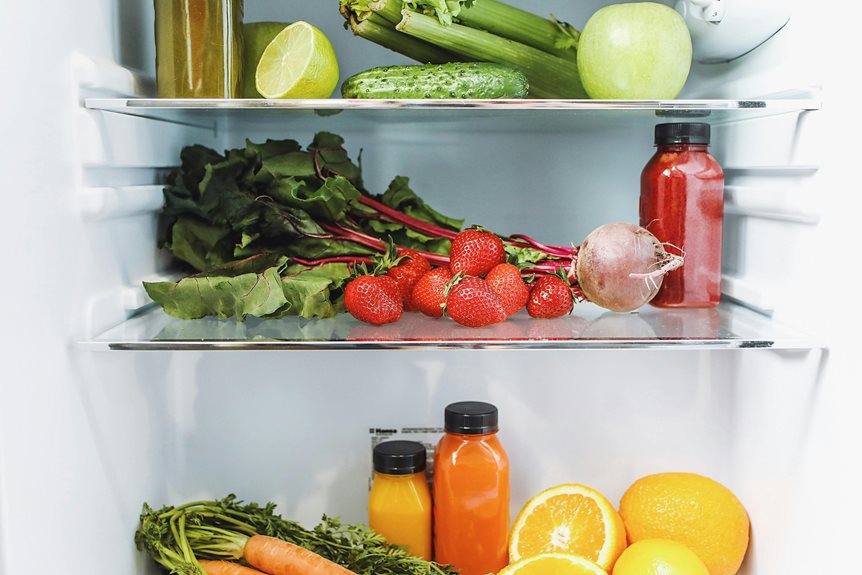To juice carrots perfectly, start by washing and cutting them into 1-2 inch pieces, soaking them for 30 minutes to improve extraction. Next, feed the carrot pieces slowly into your juicer, ideally using a slow juicer for better nutrient retention. Finally, store your fresh juice in an airtight, opaque container and refrigerate for up to 5 days. Adding ginger or citrus can enhance both flavor and preservation, and there’s much more to discover about maximizing your carrot juice benefits.
Preparing Your Carrots for Maximum Juice Yield
Before diving into the juicing process, properly preparing your carrots will greatly boost your juice yield and guarantee the best achievable results.
Start by thoroughly rinsing your carrots under running water, using a vegetable brush to remove any dirt. For enhanced extraction, you can soak them in clean water for 30 minutes.
While peeling is optional, it’ll give you smoother juice. If you’re using organic carrots, you can skip this step to retain more nutrients. Consider adding oranges and ginger to create a refreshing and flavorful blend. Carrots are praised for their versatility and nutrient density, which includes antioxidants and carotenoids beneficial for health.
Cut off both ends, then slice the carrots into 1-2 inch pieces for efficient feeding through your juicer. To maintain quality, make certain you’re using fresh, tender carrots and remove any green tops or damaged sections.
For best results, chill your carrots before juicing and use a sharp knife when cutting to prevent crushing.
Mastering the Juicing Process
Mastering the art of carrot juicing starts with choosing the right equipment for your needs. For ideal nutrient retention, select a slow juicer over a centrifugal model. You’ll get better quality juice and more value from your carrots. Feed your pre-cut carrot pieces (1 to 1½ inches) slowly into the juicer’s chute to prevent clogging. If you’re using a blender instead, combine 250 grams of carrots with water or other liquids, then strain through a fine mesh or cheesecloth. For enhanced flavor and nutrition, you can add ginger, oranges, or cucumbers to your juice. Wheatgrass juicer is recommended specifically for wheatgrass due to its fibrous nature. Soaking carrots for 30 minutes before juicing improves extraction and yields more juice. Remember to chill your ingredients beforehand, but don’t refrigerate the finished juice, as this can lead to oxidation. Line your pulp catcher with a produce bag for easy cleanup and potential pulp reuse.
Storing and Enjoying Your Fresh Carrot Juice
While fresh carrot juice tastes best when consumed immediately, proper storage methods can help preserve its nutrients and flavor for several days. Store your juice in glass or BPA-free containers with airtight, silicon-lined lids to maximize freshness. For maximum protection, use opaque containers to shield your juice from light exposure. You’ll get 3-5 days of shelf life when refrigerated, but you can extend this to 12-16 months by freezing. Juicing can also boost energy levels by providing a concentrated supply of nutrients that are quickly absorbed by the body. To boost longevity, add citrus or ginger to your juice blend – their natural preservative properties slow oxidation and enhance storage time. For ideal results, choose containers that minimize headspace and consider vacuum sealing to prevent oxidation. You’ll retain more nutrients by keeping your juice cold and protecting it from air exposure. Remember that raw juice generally lasts 3-7 days, but it’s best to consume it within 3 days for peak nutritional benefits.






Konnichiwa! (Hello!) I'm Pat Tokuyama, a Japanese tofu cookbook author, who travels for music, food, and adventure. If you like Japanese tea, checkout some of the newestorganic japanese tea, matcha bowls and noren and more!
** Curious about the Plant Based Japanese Cooking Club? ** Learn more here!